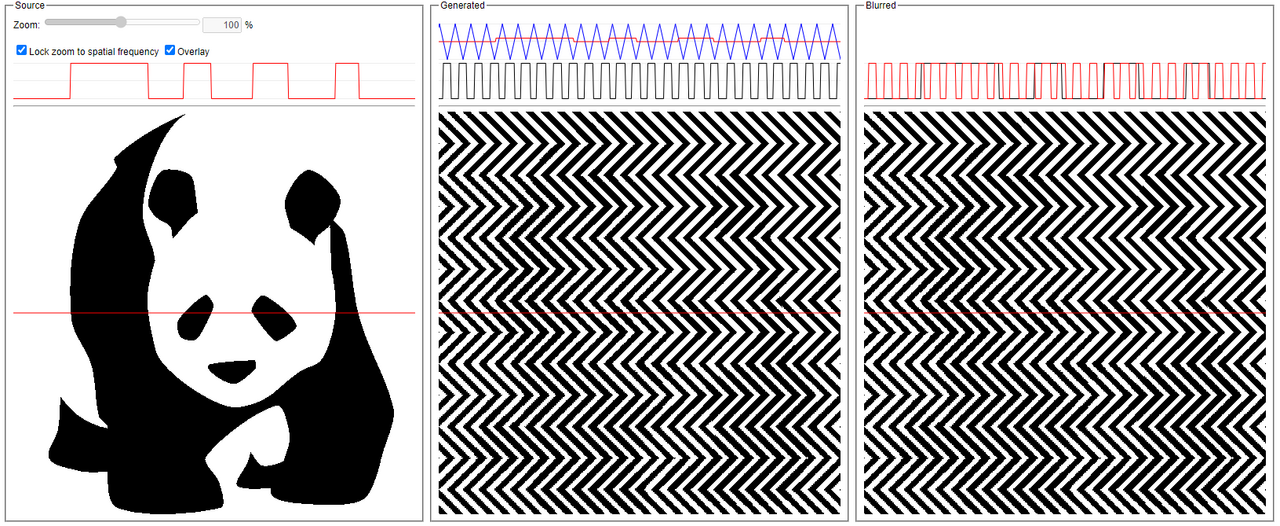PandAcuity
Optical illusions, tricking our visual system, allow us to study the process of our perception of the world, or like the Czech physiologist J. E. Purkinje said: “Illusions of the senses tell us the truth about perception”.
The vision scientist Michael Bach maintains on his homepage a list of optical illusions and their explanations; however, in many of them, it is not quite clear how they fool our brain. In 2016, the artist Ilja Klemencov revealed the artwork “They can disappear”, pointing out the danger of extinction of the panda bear. The illustration shows the WWF logo, a panda, hidden behind black-and-white zigzagged lines. Many people struggle to spot the bear at a first glance. However, stepping back or taking off the glasses unveils the panda. This led us to the question whether the ability to see the panda is related to the observers’ visual acuity and whether the panda illusion could be used for its estimation. We found a significant correlation between spatial frequency of the zigzagged lines and visual acuity. The counterintuitive application of this illusion and the simplicity of the test may render it useful for estimating visual acuity.
Currently, we are investigating the Panda illusion as possible application for cross-validating results of various visual acuity tests in a large study with 150 young children and as potential early marker for Glaucoma.
Software
Patent
- “METHOD AND DEVICE FOR DETERMINING A REFRACTIVE ERROR”
patentimages.storage.googleapis.com/c3/79/f1/1d315aa1d14bcd/EP3903664A1.pdf
Publications
- Kelbsch, C., Spieth, B., Zrenner, E., Besch, D., Straßer, T., 2021. PandAcuity in paediatrics: a novel clinical measure of visual function based on the panda illusion. Br. J. Ophthalmol. bjophthalmol-2021-319935. doi.org/10.1136/bjophthalmol-2021-319935
- Torsten Straßer, Anne Kurtenbach, Hana Langrová, Laura Kuehlewein, and Eberhart Zrenner. 2020. “The Perception Threshold of the Panda Illusion, a Particular Form of 2D Pulse-Width-Modulated Halftone, Correlates with Visual Acuity.” Scientific Reports, no. 1 (December). Nature Publishing Group UK: 13095. doi:10.1038/s41598-020-69952-6.
- Torsten Strasser, Bettina Spieth, Eberhart Zrenner, Dorothea Besch, and Carina Kelbsch. 2018. “Can You See the Panda? Visual Acuity Assessment Using the Pandacuity Test in Children – Preliminary Results.” Investigative Ophthalmology & Visual Science 59 (9): 5199.
- Torsten Strasser, Hana Langrová, Laura Kuehlewein, Annette Werner, Anne Kurtenbach, and Eberhart Zrenner. 2017. “THEY CAN DISAPPEAR - Can the Panda Illusion Be Used to Test Visual Acuity?” Investigative Ophthalmology & Visual Science 58 (8): 4216.




